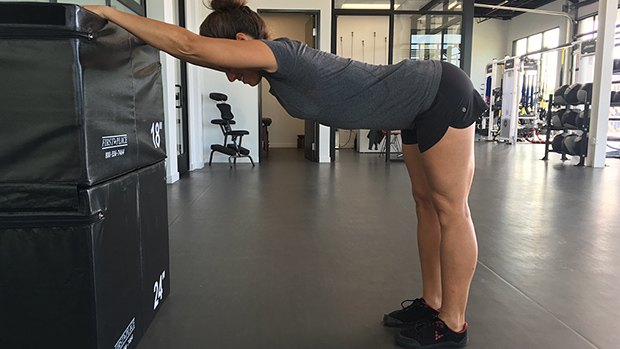We lifters love to analyze and debate our beloved hobby. Sadly, some seem to enjoy the debating part more than actual lifting, often to the detriment of their physique development.
One of the hottest topics for online discussion is optimal training frequency, and whether such a beast even exists. This article will offer the pros and cons of high and low frequency training, and will suggest when each might be useful in your training. It should be a dandy (one-sided) debate, so get your popcorn ready.
First, let's define terms:
- High Frequency: Training a specific movement or exercise three or more times per week.
- Low frequency: Training a specific movement or exercise once a week or less.
Pros and Cons of High Frequency Training
High frequency training, if programmed properly, will deliver faster results than low frequency training. Strength coach John Broz pointed this out with an interesting (if disturbing) hypothetical:
"If your family was kidnapped and you had one month to put 100 pounds on your squat, would you squat just once a week?"
But does that argument still hold water when searching for a sustainable system to follow for months or years or even decades?
Here's a complete list of the pros and cons of high frequency training:
Pros
Delivers faster/better results.
Builds neuromuscular coordination.
Strength and performance are highly neural in nature; being able to practice these movements more frequently is beneficial.
More practice is usually better.
Think of the guideline that mastery takes 10,000 hours – you'll build that up faster with higher frequency training. At the end of the year I like to simply look at how thick my training log is; how many pages is it (each session is a page). The thicker the log, the more likely I was making progress.
High frequency allows one to build significant work capacity in that exercise.
Work capacity follows the principle of specificity – you can get good at one thing while not being great at something else.
When I'm specializing in the bench press, I might do 50+ reps at 85% or more over a week – my work capacity in that exercise is great.
But that doesn't mean if I suddenly switched to a bodybuilding style, '20 sets for chest with minimal rest' workout that I would rock it out. If I were peaking for a bench press competition that type of workout would destroy me.
llows for more practice with heavy weight.
You have more time to rehearse your set up, focus on your cues, and simply get prepared to lift the weight and perform the exercise.
The body gets used to lifting heavy frequently, at least on certain exercises.
The first few weeks are often rough – and that's when most people quit – but after that initial period, the body adapts and almost seems to crave going heavy on a regular basis.
It works.
My best gains in the bench press were on high frequency programs. Also, the success of Sheiko style, Smolov, and Olympic lifting routines are enough to warrant a serious look at high frequency training.
High frequency training seems to work well with female trainees or smaller, lighter lifters.
I suspect it's because their smaller frames experience less damage – even if the relative intensity is the same for a larger lifter – and thus are able to recover faster.
Lifts that seem to respond favorably to high frequency:
- Olympic lifts
- Bench press
- Overhead press
- High-bar squats
- Bodyweight exercises
- Sport-specific movements
- Abs/core work
- Forearms
- Calves
Note: I have not had good success training both the bench press and the overhead press with high frequency simultaneously.
Cons
Higher rate of injury.
When you're training heavy and hard on a regular basis, your chance of injury is higher. In the earlier example (adding 100 pounds to your max squat to save your family), you'll either adapt and get strong or you'll simply fall apart, resulting in a terrible squat by month end. Injury risk increases with exposure – more frequent exposures means a greater chance of injury.
If you have any compensations or preexisting injuries, high frequency training can be a rough ride.
If your squat form is just so-so and you decide to start squatting hard three times a week your knees and lower back could pay the price. Remember, squats aren't bad for the knees, but lousy squats might be bad for your knees.
High frequency programs are harder to program.
I find this to be particularly true when programming for the masses – some lifters seem to make great gains, others struggle to move along. The progress with lower frequency programs is much more consistent.
It's harder to peak and/or taper on high frequency routines.
When the body is used to going heavy all the time, taking even a couple days off might mess with you. On the flip side, if you just keep lifting heavy until the max day, you might show up fatigued and leave a few pounds on the platform.
Once the body is used to higher frequency, you can feel a little lost when you get off that program.
You can't stay on an intense high frequency program forever (due to injury or burn out), but after you scale back there's often a period that feels like nothing is working and your strength drops significantly.
Strength levels seem to fluctuate more on high frequency programs.
The good news is that if you peak right you can be really strong when it's max-out time, but there will also be periods where your strength is lower than normal or well off your max.
With high frequency training, gym maxes are similar to competition maxes.
Don't expect a big increase just because it's a meet – the body gets used to doing 95-98% regularly, but don't fool yourself into thinking that on meet day you'll suddenly have another 10% in available strength.
It can be hard to focus on muscular balance and work on weak points.
If you're benching all the time, you should in theory be performing a ton of pulling movements.
But if most of the session is devoted to benching, you won't have enough time to do all the necessary pulling exercises, unless you happen to live in the gym. One tends to specialize, and that often comes with a tradeoff of undertraining something else.
High frequency training has a greater rate of burnout.
I've seen a good number of fellow gym members that appear to be serious, come in and blast away for a few months, and then suddenly stop showing up for a significant length of time.

Low Frequency Training
Low frequency training is often more manageable long term than high frequency training. I could lay out a solid low frequency program and most would be able to follow it (or at least something similar) for a year with ease. Lifting and fitness should be lifetime activities, not just a flash in the pan of high performance.
Pros
Easier to build muscular balance.
With lower frequency training you have more time to spend on the smaller areas of the body, so rear delts, triceps, etc., can be trained hard to meet proper strength/size ratios.
Low frequency training has less risk of injury.
It's not a promise you won't get hurt, but the chance is reduced due to less frequent exposures and because the trainee is likely better balanced.
Lower frequency programs are generally easier to peak and/or taper.
Give me a week or two and I can guarantee you'll be 100% ready to lift without feeling stale or fatigued.
It's easier to predict the rate of adaptation.
Most people make a certain level of progress with low frequency training. That progress might be a bit slower than what they could achieve training with higher frequency, but it's usually consistent.
It's helpful, especially when programming for the masses, if I know that in X number of weeks the lifter should be able to perform Y number of reps on an exercise.
Strength levels seem to be more consistent with low frequency training.
I once set up a graph and plotted my toughest set on the bench press each week while on low frequency training. I was amazed at how static my strength was for an entire year – I'd always be within 10 pounds of my max, often within 5 pounds or less. That's nice for the athlete that wants consistent performance.
Low frequency workouts tend to take less time.
This isn't a promise and it won't be true if you train all the smaller areas with higher volume, but if you just focus on the big stuff the total time per week will be shorter.
Low frequency training promotes recovery.
This is particularly valuable for lifters that are older, larger, stronger, and/or have injuries to work around. I don't know too many super heavy weight powerlifters that follow high frequency training.
Lifters seem to experience less burnout and are more consistent with low frequency training.
One of the hallmarks of some of the better-known lower frequency lifters isn't just how strong they were, it was their longevity in the game.
Today, you just don't see lifters winning five or ten national championships in a row that often anymore. It could be for a variety of reasons, but I believe higher frequency training is partly to blame.
Lower to medium frequency does a better job of building muscle, particularly when total body growth is the goal, which helps explain why this system is popular with bodybuilders.
Lifts that seem to respond favorably to low frequency:
- Low bar squat
- Deadlift
- Good mornings
- Most lat exercises
- Biceps exercises
Cons
Limited practice time.
If you're performing a lift once a week or less, there's limited time to work on or refine your technique. This might be okay if your technique is already solid, but if it needs work you might not be receiving enough of a stimulus.
As mentioned, the limited practice may not build neuromuscular coordination effectively.
Imagine trying to learn a skill and the coach said, "Okay, practice that ten times today and then we're done for the week." Lifting weights is a skill that requires repetition.
Low frequency training may not provide maximal short-term results.
Lifters want to see results and they want to see them fast, so this is a significant negative.
Low frequency training may not allow the lifter enough time to work on weak points, either muscular or as part of a specific movement.
Summary
I love me a good training argument, and you'd be hard pressed to find one more spirited than low frequency versus high frequency training. The fact is, however, that progress can be made with either approach.
Therefore, the ideal setup – if that even exists – would be a combination of both types of programs throughout the training life cycle.
The only question is, which will you do next?





